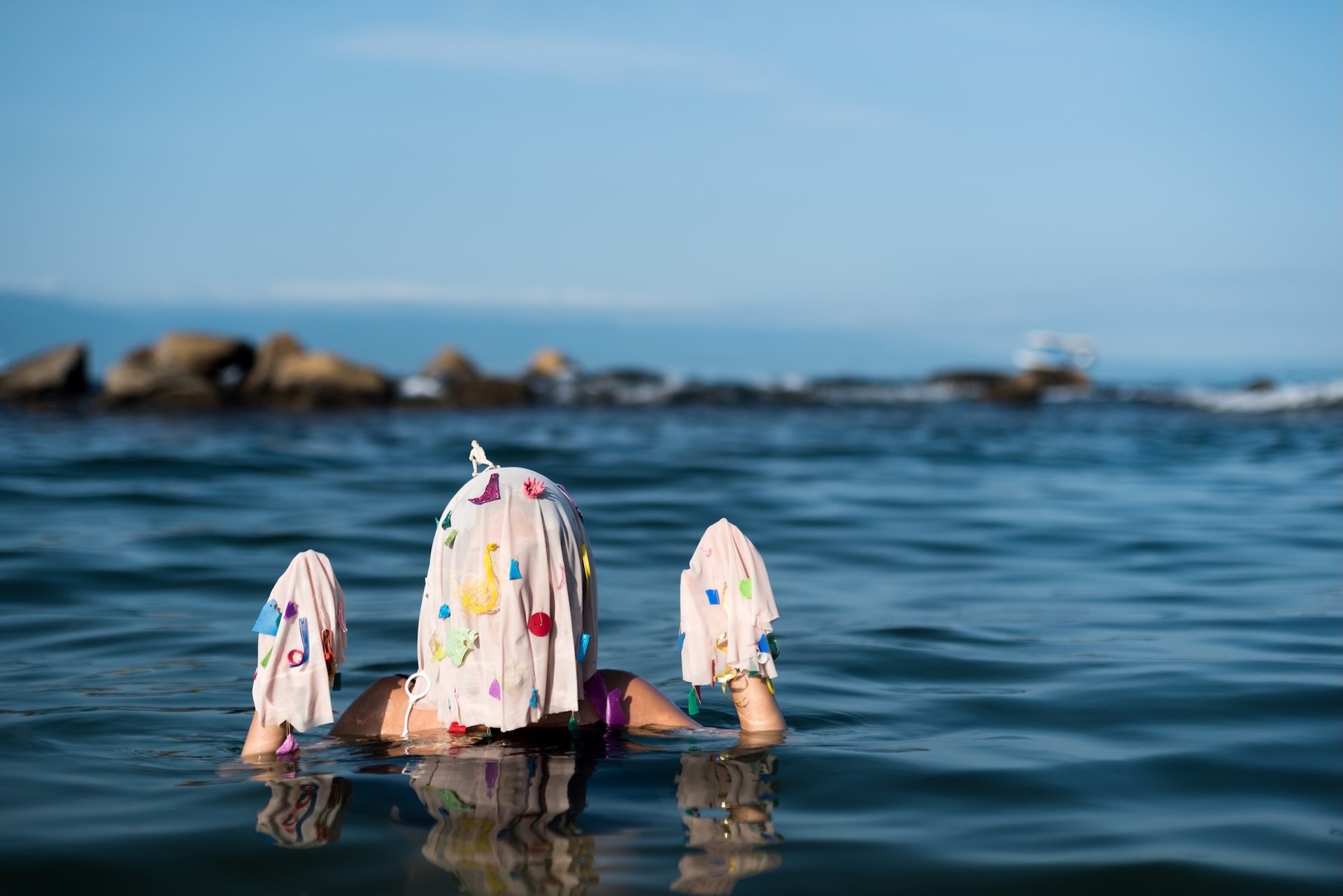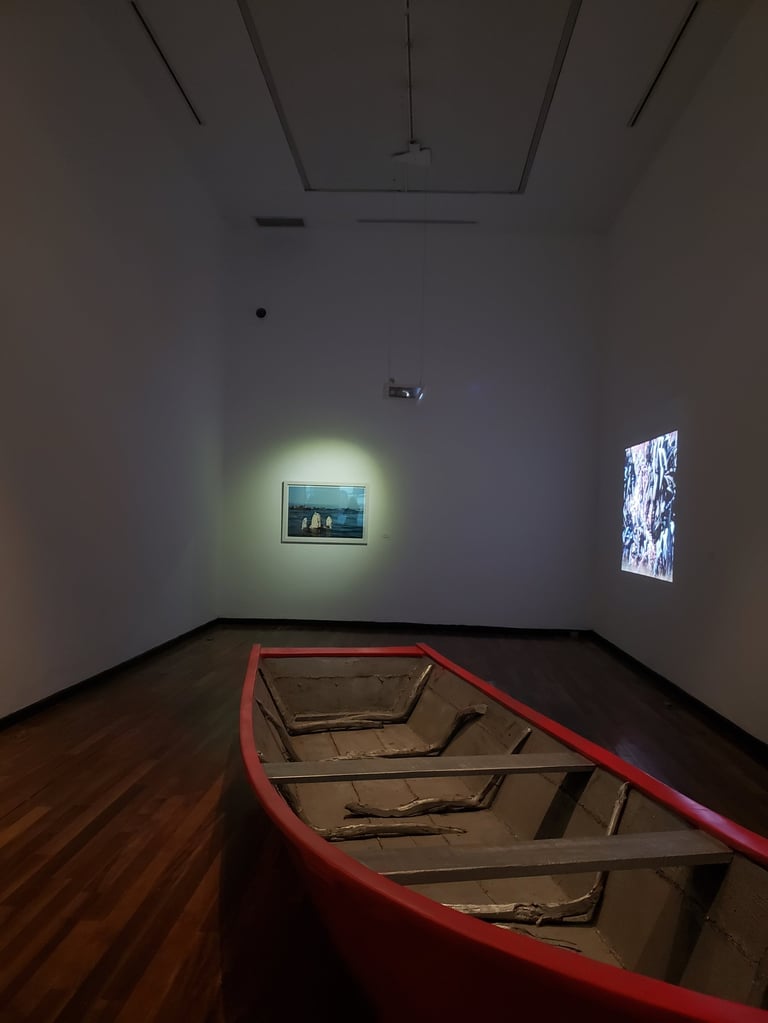
A flote (Afloat), durational performance at a beach in the mexican Pacific Ocean, 2020. Photography by Pistor Orendain.
After thoroughly cleaning the beach, I crafted a veil and a pair of gloves from the collected plastic. Adorned in this way, I stood in the ocean, letting myself be carried by the ebb and flow of the waves.
Although plastic is not a living organism, it acts and impacts as if it were one, devastating and destroying marine ecosystems (Moore). The plastic choking our oceans and beaches is the remnant of a product born of extractivism, steeped in history—from its manufacture using fossil fuels, to its useful life (which can last only a few seconds), to its disposal. Plastic becomes even more active once it reaches the sea. It entangles and strangles animals. Over time, sunlight and wave action break it into tiny fragments that act as magnets for toxic substances, which are then ingested by all kinds of marine life.
Then comes the most ironic and twisted turn in this whole chain: plastic reaches our own insides, as we eat the fish that fed on the plastic we ourselves discarded into the ocean.
Plastic is part of who we are, both through its origins and through our diets. Its existence is inextricably intertwined with ours. Wearing the veil and gloves made of plastic waste embodies this intimate entanglement and challenges the supposed passivity of the material. The action entangles us in responsibility and suggests that, although dystopia is already here, rethinking our relationship with matter, landscape, and other species, not as mere exploitable, inert, and passive resources, opens new pathways of understanding, steering us away from consumerist and destructive practices.


A flote documentation was part of the exhitbion Enterrar los pies en el paisaje, by Museo Cabañas and Kadist Collection, Guadalajara, Mexico, 2021, curated by Lorena Peña Brito.